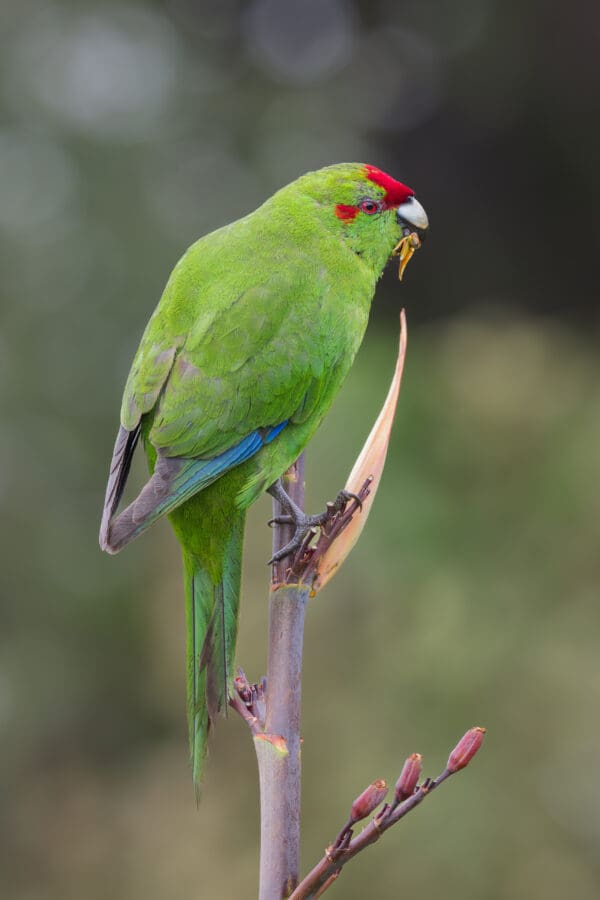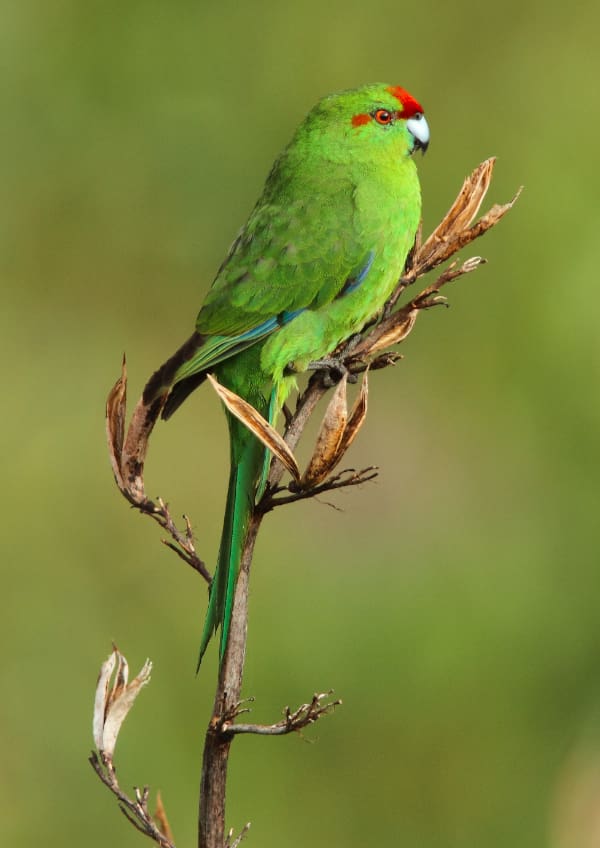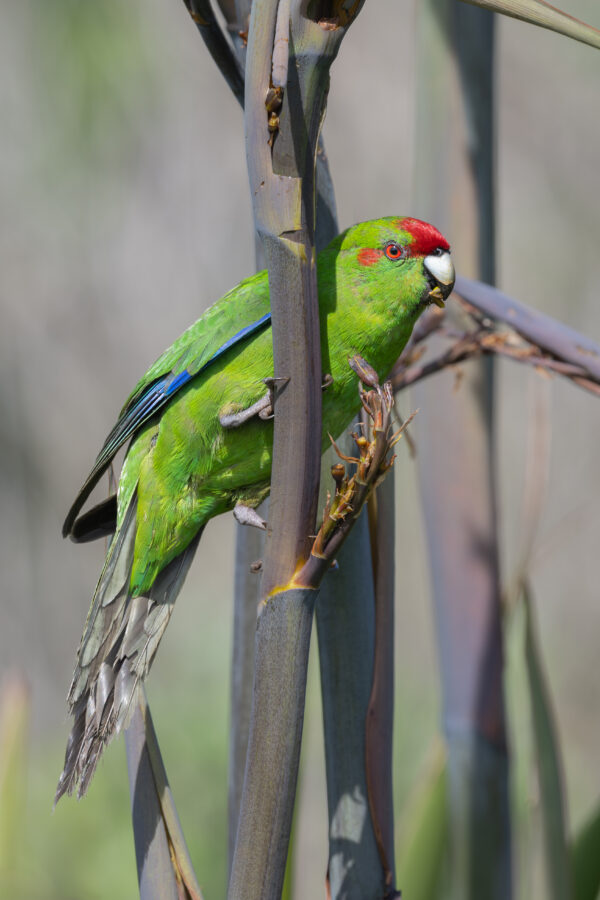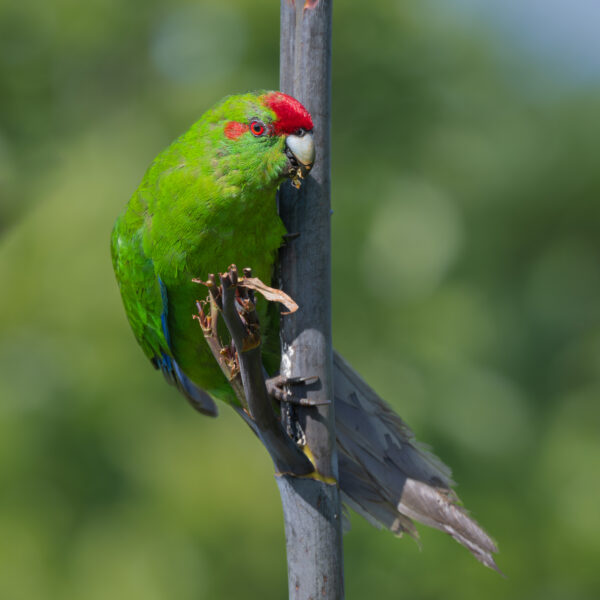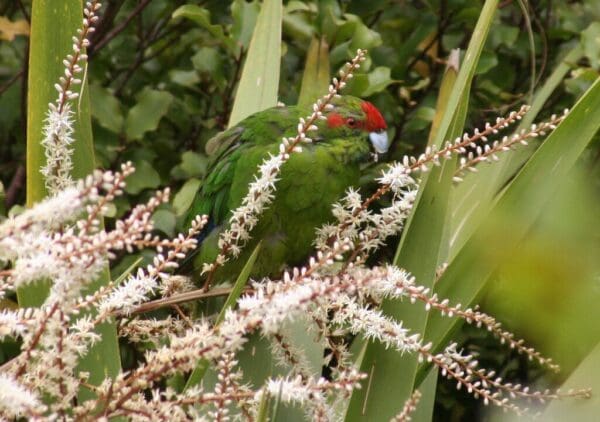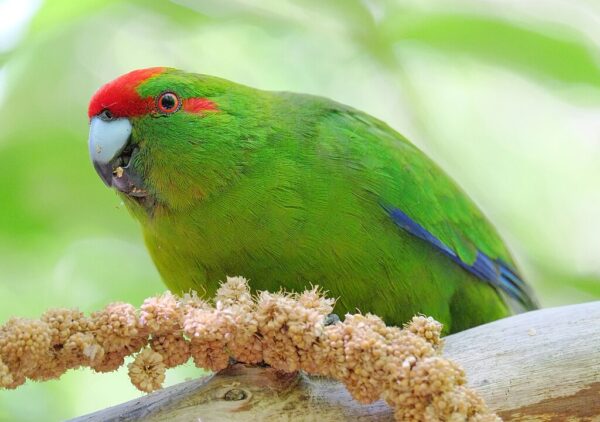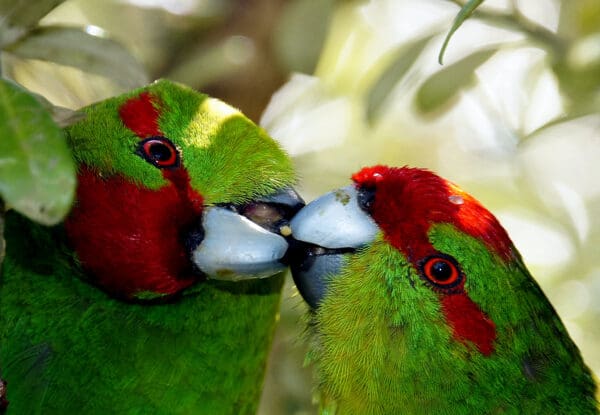Red-fronted Parakeet
Also known as:
Red-fronted Kakariki, Red-crowned Parakeet or Kakariki, New Zealand Parakeet
Also known as:
Red-fronted Kakariki, Red-crowned Parakeet or Kakariki, New Zealand Parakeet
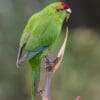
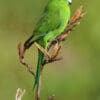
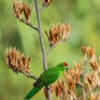

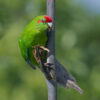
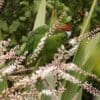
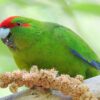
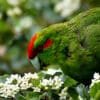
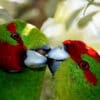
DID YOU KNOW?
The Red-fronted Parakeet is also called the Red-fronted Kakariki – “kakariki” in Maori means “little parrot.”

Cyanoramphus

novaezelandiae
Size:
27 cm (10.5 in)
Weight:
50-113 g (1.75-3.9 oz)
Subspecies including nominate:
five: C.n. novaezelandiae, C.n. cyanurus, C.n. chathamensis, C.n. erythrotis, C.n. subflavecens
Colour Adult:
C.n. novaezelandiae: Both adults red forehead, crown, band from lores to behind eyes and patch on each side of rump; purple/blue outer webs of flight feathers; underparts yellow/green. Beak silver/grey tipped with dark grey. Eye red.
C.n. cyanurus: Both adults as in novaezelandiae, but varying blue wash to upperparts; less yellow on underparts, more blue/green; darker blue wash on outer webs of flight feathers; blue wash on tail.
C.n. chathamensis Both adults as in novaezelandiae, but face bright green; underparts more yellow; slightly larger.
C.n. erythrotis: Both adults as in hochstetteri, but outer webs of flight feathers pale green/blue. Extinct.
C.n. subflavescens: Both adults as in cookii, but generally more yellow in body colour, particularly on cheeks and underparts; red markings on head less extensive. Extinct.
Colour Juvenile:
C.n. novaezelandiae: As in adults but with less red markings on head; tail shorter. Eye pale brown.
Call:
Calls heard are distinctive; in flight or when alarmed a prolonged, repetitive series of notes. When feeding gives subdued notes; while perched calls are three syllable notes or soft, musical sounds.
More Information:
Content Sources:
CITES
BirdLife International
Cornell Lab of Ornithology/Birds of the World
Parrots: A Guide to Parrots of the World, Juniper and Parr, 1998
Parrots: Status Survey and Conservation Plan 2000-2004, Snyder, McGowan, Gilardi, Grajal.
Parrots of the World, Forshaw and Cooper, 1977. 2010 edition
Parrots of the World, Forshaw, 2006.
Lexicon of Parrots, Thomas Arndt.
Parrots in Aviculture, Low, 1992.
Parrots: Their Care and Breeding, Low, 1986.
Captive Status:
Common
Longevity:
10+ yrs
Housing:
Walk-in enclosure, minimum length 3 m (9.8 ft).
Diet:
Small seed mix such as: canary, millet and smaller amounts of oats, buckwheat, safflower and a little hemp; limited sunflower seed; spray millet; green leaves such as: Swiss chard, lettuce, sowthistle, dandelion, chickweed; seeding grasses; rearing food made from hard-boiled egg, wholegrain bread and carrot, all ground to crumbly consistency; complete pellet.
Enrichment:
Love to climb, therefore provide ladders, ropes and swings; not a vigorous chewer. Provide large flight for exercise. Provide areas for bathing.
Nest Box Size:
Vertical box 8″ x 8″ x 14″ (20.3 cm x 20.3 cm x 35.5 cm).
Clutch Size:
5-9
Fledging Age:
5-6 weeks
Hatch Weight:
—
Peak Weight:
—
Weaning Weight:
—
World Population:
16,500-35,300 mature individuals (including saisetti and cookii, both former conspecifics). Decreasing.
IUCN Red List Status:
Least Concern
CITES Listing:
Appendix I
Threat Summary:
Erythrotis and subflavescens both extinct; other populations declining due to habitat loss and introduced predators. Both extinct subspecies were also hunted for food and persecuted as crop pests. Still common on Stewart and Antipodes Islands.
Range:
C.n. novaezelandiae: New Zealand, including offshore islands and Auckland Islands.
C.n. cyanurus: Kermadec Islands, New Zealand.
C.n. chathamensis: Chatham Islands, New Zealand.
C.n. erythrotis: Formerly Macquarie Island.
C.n. subflavescens: Formerly Lord Howe Island, Australia.
Habitat:
Found in native forest on mainland New Zealand, open scrub on some offshore islands and tussock grassland on Antipodes Island.
Wild Diet:
Feeds on fruits, flowers of Metrosideros excelsa; seeds of Leptocarpus, Cortaderia richardii, Coprosma macrocarpa, Macropiper exulans and Pittosporum crassifolium; leaves, buds, berries, flowers, nectar and shoots; also invertebrates, honeydew and seaweed and small limpets.
Ecology and Behaviour:
Are most often seen in pairs which remain together throughout the year. Larger groups gather at food sources. Flocks also form to bathe in intertidal pools and roost communally. Birds feed actively in early morning, resting and preening during the day and feeding again in the afternoon.
Clutch and Egg Size:
5-9 broadly elliptical eggs, 26.0 x 21.5 mm (1 x 0.8 in).
Breeding Season:
October-March. Nest is in tree cavity.
Related Links:
—
